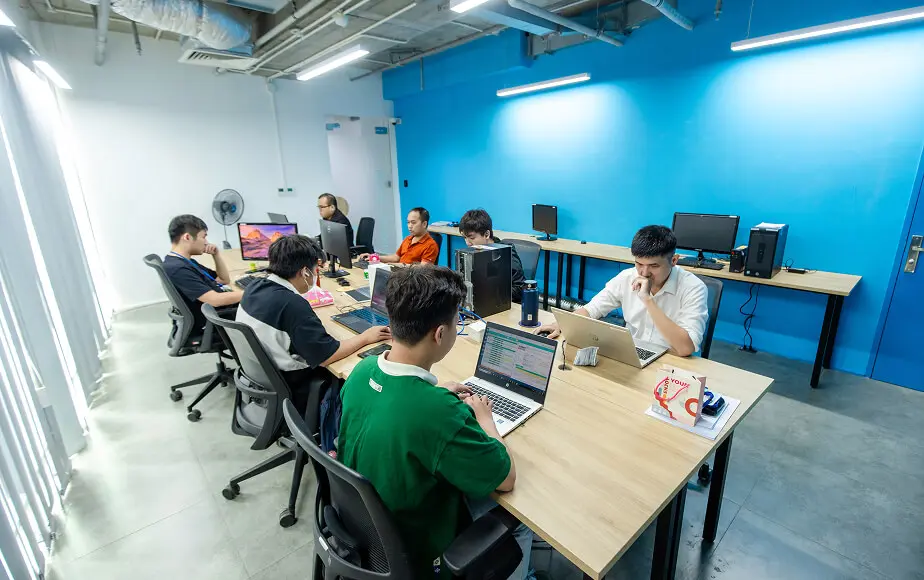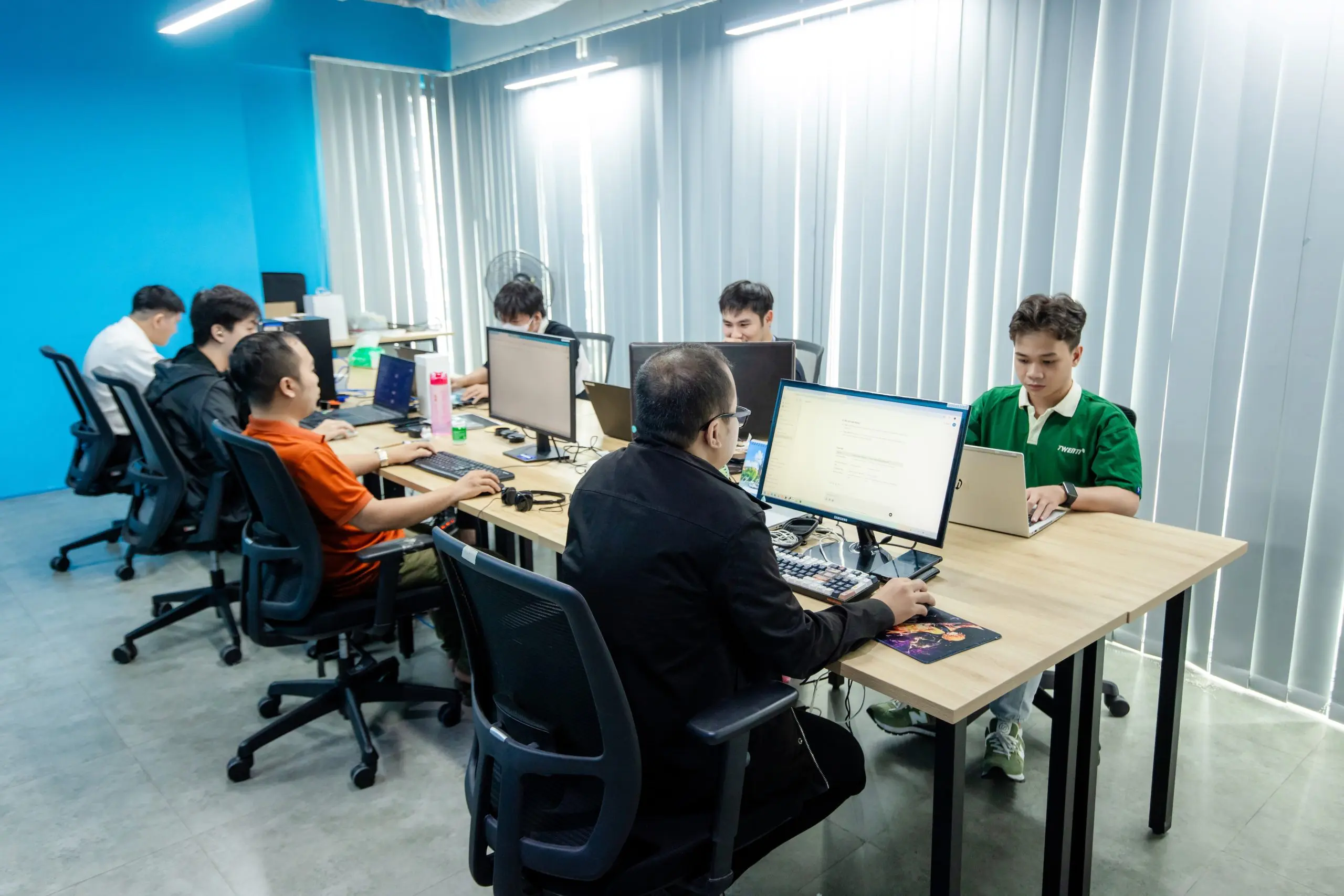

Why Systems Development in Vietnam?
Why Choose System Development in Vietnam?
Vietnam is currently recognized as a highly favored destination for offshore development outsourcing.
ALLEXCEED VIETNAM — a software development company specializing in enterprise systems with over 10 years of experience in offshore development and a branch office in Vietnam — is pleased to present to you the advantages and challenges of choosing Vietnam as your offshore development destination.
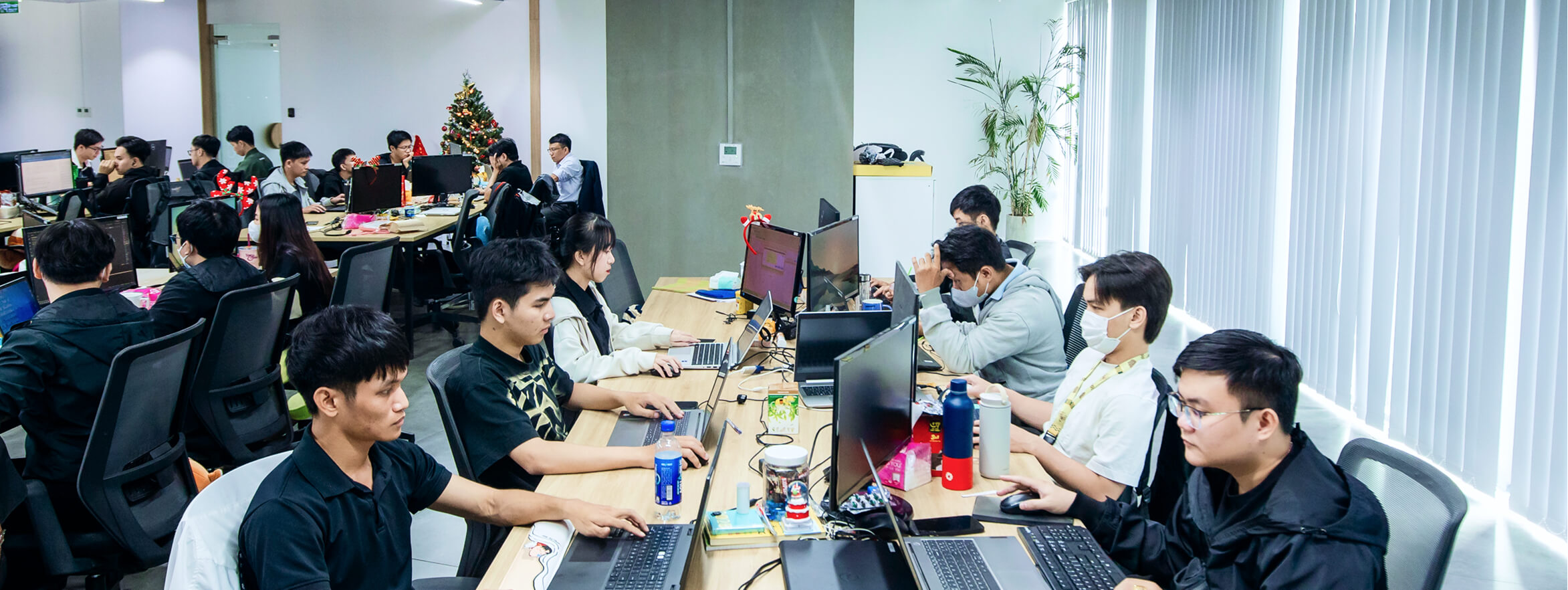
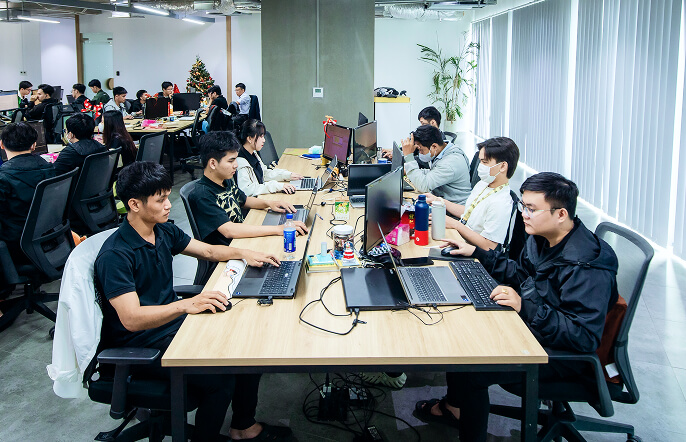
Overview
Based on the above information, we have summarized the advantages and disadvantages of offshore development in Vietnam.
Advantages
- Able to secure engineering talent at low cost.
- Able to secure talented and diligent engineers.
- Vietnam is a culture that is welcoming to Japanese people.
- Vietnam’s national policy will continue focusing on workforce development, ensuring a reliable talent pool in the future.
Disadvantages
- Response speed may be somewhat slow due to language barriers.
- Risk of employee turnover due to a relaxed attitude toward job changes.
- Wages are expected to continue rising due to rapid economic growth.
According to the 2016 forecast by the Ministry of Economy, Trade and Industry, by 2030, out of a total of 850,000 Japanese engineers, there will be a shortage ranging from 410,000 to 790,000 personnel.
In the context where many companies are urgently securing human resources for digital transformation (DX) and other initiatives, it is evident that the shortage of skilled personnel will become increasingly severe in the coming years.
Our company will continue to promote offshore development in Vietnam, a highly advantageous outsourcing destination, while systematically organizing and training human resources to ensure stable service delivery to our client companies, mitigating potential future risks.
Ministry of Economy, Trade and Industry
Survey Results on the Latest Trends and Future Projections of IT Human Resources
Province and Population of Vietnam
Vietnam and Japan share many similarities in terms of territory and population, which makes Japanese companies feel a strong sense of familiarity.
Please consider the data below from the perspective of selecting a location for offshore development outsourcing.
The following data is sourced from the Basic Data on Vietnam published by the Ministry of Foreign Affairs of Japan.
Vietnam and Japan, respectively:
Vietnam Japan
329,241km²
377,975km²
Approximately 97,620,000
125,800,000
31 years
48 years
2019: 7.02%
2020: 2.91%
2019: 0.3%
2020: -4.5%
Vietnam
Japan
Buddhism, Catholicism, Cao Dai
Buddhism, Shinto, Christianity
Area
Population
Median Age
Economic Growth Rate
Religion
Swipe right or left to view content
The area and population of Vietnam are very similar to those of Japan. As of 2022, Vietnam’s population ranks among the top 15 worldwide. In terms of religion, there is little difference compared to Japan, so clients need not be overly concerned about this aspect when choosing an offshore development location.
The key points to note are the average age and economic growth rate.
Vietnam’s economic growth rate in 2019 was 7.02%, which is close to Japan’s growth rate before 1988, prior to the economic bubble burst. Even in 2020, when global economic growth slowed due to the impact of COVID-19, we still observed Vietnam’s strong economic momentum. While we can leverage Vietnam’s significant economic growth, there is naturally a risk that offshore development costs will continue to rise in the future. However, Vietnam’s population is relatively young, making it easier to secure offshore development human resources.

In fact, at our company, the average salary for Vietnamese engineers has increased by nearly 42% over the past 10 years, and recruiting new staff has become increasingly challenging each year. Nevertheless, many of our employees have remained with us for a long time, and we continuously strive to reduce development costs by establishing efficient development processes.
TOPICS
- The Đổi Mới policy began to show results around 1989. Although growth temporarily slowed due to the Asian financial crisis (1997) and the global financial crisis (2008), Vietnam achieved high growth rates in the 1990s and 2000s, reaching lower-middle income status by 2010.
- From 2011, efforts to stabilize the macroeconomy led to a temporary slowdown in growth. However, in recent years, Vietnam has achieved some of the highest growth rates in the ASEAN region (6.68% in 2015, 6.21% in 2016, 6.81% in 2017, 7.08% in 2018, and 7.02% in 2019). With the implementation of multiple Free Trade Agreements (FTAs)—14 FTAs were in effect by the end of 2020—combined with infrastructure development funded by Official Development Assistance (ODA) and cheap labor, Vietnam has become a major destination for foreign direct investment in manufacturing and has continued export-oriented economic growth.
- In 2020, due to the impact of the COVID-19 pandemic, economic growth slowed to its lowest point in the past 10 years. Nevertheless, Vietnam maintained the highest growth rate in ASEAN, while neighboring countries experienced negative growth.
Note: Đổi Mới is a reform policy adopted by Vietnam to overhaul its political and economic system in response to significant changes in the international environment.
Here is the data excerpted from the basic information about Vietnam provided by the Ministry of Foreign Affairs of Japan:
Proactive IT Policies
We will outline the IT policies currently being implemented by the Vietnamese government, which have created the context for the increasingly vibrant offshore development outsourcing to Vietnam. Vietnam has promoted IT growth through two long-standing policies: the “IT Human Resource Development Policy” and the “Foreign Investment Attraction Policy.”
IT Human Resource Development Policy
Below is an excerpt from the "Trends in Vietnam's Industrial Technology Development Policy," published by JETRO.
https://www.jetro.go.jp/ext_images/jfile/report/05000801/05000801_002_BUP_0.pdf
| Project Name | Project Details |
|---|---|
| Improving the Quality of IT University and Graduate Students | By 2005, the goal was to train 50,000 IT engineers, including 25,000 becoming experts and senior programmers. The educational outcomes aimed to elevate knowledge, practical skills, and proficiency in English and other foreign languages to match regional Asian and international standards. IT technologies were leveraged to innovate educational content and teaching methods. |
| IT Training in Other Specialized Departments | Courses were introduced to provide the latest IT knowledge, especially software technology, to key instructors and outstanding students in various other faculties and departments. General computer science curricula and applied information science programs were developed. |
| Diversification and Socialization of IT Training Programs | Education methods were diversified and investments in education were promoted to meet a variety of learning needs. |
| IT Training and Application in Primary and Secondary Schools | Effective and appropriate IT teaching and learning were implemented in primary and secondary schools. IT was applied to various subjects and administrative tasks. |
| Application of Educational Services in Network and Internet Development (EduNet) | Computer infrastructure connected to the Internet was built to provide educational and training services. Students and teachers could access the Internet for free or at costs covered by the school. Educational and training services were made available online, including educational data, entrance exams, etc. |
According to the Ministry of Economy, Trade and Industry of Japan, the number of IT personnel in Japan in 2020 was approximately 920,000 and is expected to decline after peaking in 2019. In contrast, as of 2019, about 430,000 people were employed in software development companies in Vietnam, and this number is projected to increase in the near future.
*According to a 2021 publication by TopDev.
Universities in Vietnam also implement practical and specialized educational programs, ensuring that graduates possess the necessary skills to be job-ready after only a few months of post-graduate training.
The average age of employees at our company is also quite young (30 years old), with nearly half coming from leading universities such as the University of Science, Ho Chi Minh City, and Ho Chi Minh City University of Technology (equivalent to the University of Tokyo and Kyoto University in Japan). Over the past two years, we have recruited about 10 new graduates from these top universities. After joining the company and undergoing roughly two months of training, these employees are fully capable of working as offshore development team members in Vietnam. We believe we will continue to secure excellent human resources in the future.
Ministry of Economy, Trade and Industry – Current status of IT human resource development, etc.
https://www.meti.go.jp/shingikai/economy/daiyoji_sangyo_skill/pdf/001_s03_00.pdf
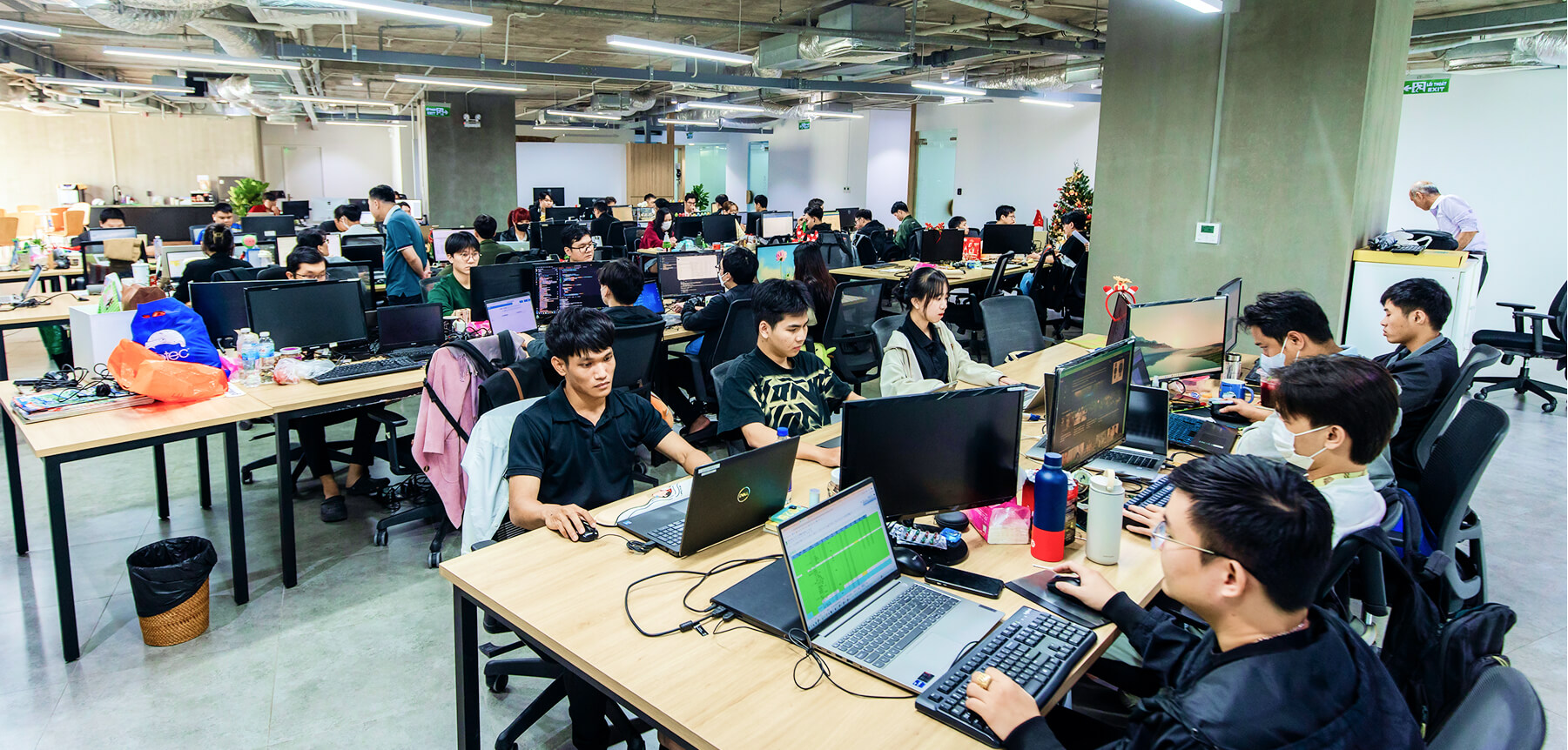
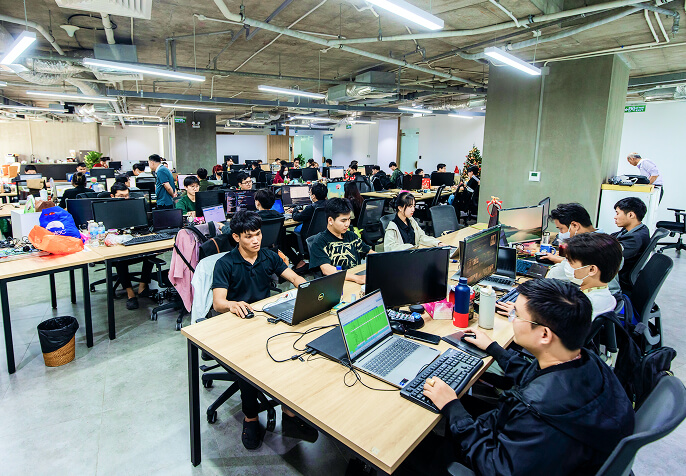
The average age of offshore system development personnel at ALLEXCEED VIETNAM is 30 years old. Half of them are graduates from Vietnam’s top universities.
Foreign Investment Promotion Policy
Regarding the foreign investment promotion policy, currently IT companies in Vietnam can receive the following incentives.
- Software companies are exempt from corporate income tax for 4 years starting from the first profitable year.
- Software companies are not required to pay additional corporate income tax.
- Companies operating under the Foreign Investment Law are subject to a corporate income tax rate of 10% (the average rate in Asia is 12%).
- Employees working in software-related roles receive personal income tax incentives similar to those given to foreigners.
- Software products and services are exempt from the 10% value-added tax (VAT).
- Software products are exempt from export tax.
Characteristics of the Vietnamese People
The Vietnamese character is often regarded as sharing many common traits with the Japanese. Naturally, there are individual differences, but fundamentally, Vietnamese people are considered honest, diligent, and possess a strong willingness to improve and excel in their work.
Aspiration for Growth
When asked, "Do you often code outside of working hours?" as many as 88% of programmers responded that they do so to improve their skills. This clearly shows their strong desire for self-improvement beyond regular work duties.
*Reference: TopDev report
Programmers place great importance on skill development. Therefore, if an offshore development company entrusted with a project fails to properly understand the significance of career orientation for programmers and does not provide training for long-term growth, there is a risk of a high turnover rate. To prevent this, our company is actively working to enhance the work environment and strengthen training programs.
TopDev 2019 VIETNAM DEVELOPER REPORT
https://topdev.vn/ENG_VietnamDeveloperReport2019_ByTopDev.pdf
What factors make you more satisfied with your job?
- Clear development and career direction 44.2%
- Intensive training 33.3%
- Suitable company culture 25.1%
- High salary 24.9%
- Challenging and interesting projects 22.9%
- Good management system 21.0%
- Facilities, equipment, and work environment 19.3%
- Flexible working hours 19.1%
- Clear and transparent procedures and policies 17.6%
- Others 12.9%
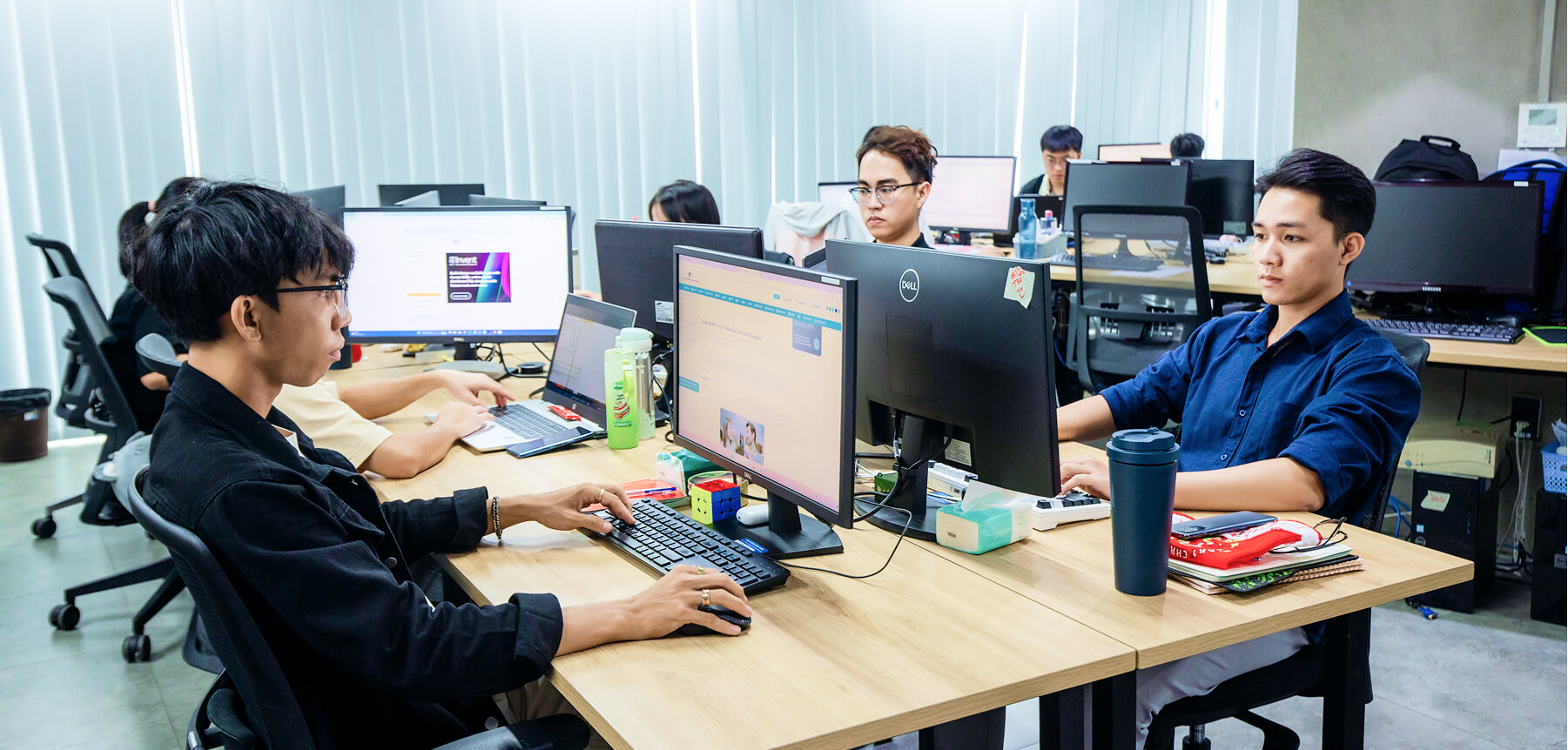
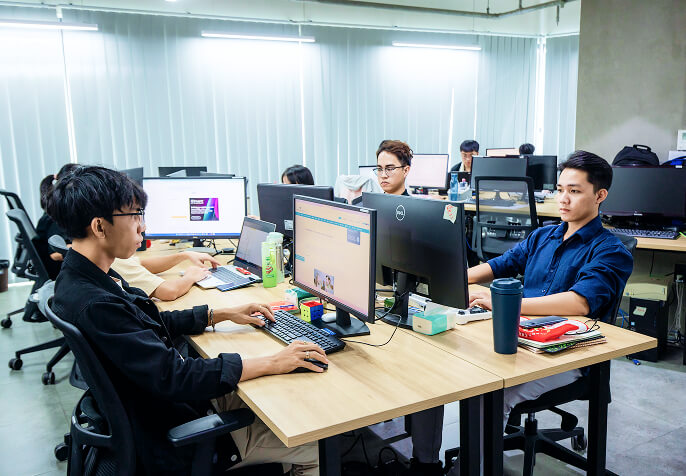
Diligent Vietnamese people
Diligent
The second key trait we highlight is honesty combined with diligence. In a customer satisfaction survey on offshore development conducted by our company, we received feedback such as: “no arbitrary development based on personal judgment” and “any unclear points are always confirmed through Q&A.” Our company’s philosophy is to "respect the spirit of bold initiative while placing utmost importance on trustworthiness." We firmly believe that by clearly communicating our company philosophy and thoroughly training our staff, our team members will embody these qualities and diligence to sincerely meet our clients’ needs.
Employee turnover rate
The third characteristic to mention is the ease of job change. According to survey data from programmers, salary ranks as the most important factor, and regarding intentions to change jobs, 61% responded, “I’m not actively looking, but would consider changing if an opportunity arises.” In practice, it is commonly known among Japanese employees residing in Vietnam that some European and American IT companies are willing to offer double salaries to attract talent.
When selecting a company for offshore development outsourcing, although it is impossible to reduce the risk of knowledge loss due to employee turnover to zero, minimizing such risks requires careful attention to the working environment and other conditions of the offshore development companies being considered for outsourcing.
TopDev 2019 VIETNAM DEVELOPER REPORT
https://topdev.vn/ENG_VietnamDeveloperReport2019_ByTopDev.pdf
Vietnam as a Japan-Friendly Country
Vietnam is one of the most Japan-friendly countries in the world, which is considered one of the reasons why Vietnam has become a popular destination for offshore development outsourcing.
Japan resumed economic cooperation with Vietnam in 1992. Japan is the largest donor country to Vietnam. The first metro line in Ho Chi Minh City was also constructed using Japanese ODA funds, reflecting Japan’s significant presence in Vietnam.
Below is data cited from the Basic Data on Vietnam published by the Japanese Ministry of Foreign Affairs.
Donor Countries
(2018, based on DAC statistics)
- Japan
- Germany
- South Korea
- United States
- France
Japanese culture is highly beloved, with Japanese games and TV dramas being very popular. Almost everyone knows famous anime such as Doraemon and Conan.
Although Japanese offshore development companies generally offer lower salaries compared to European and American software companies, they are still able to secure talented engineers due to a deep affection for Japan.
Japanese cuisine is also very popular; as of 2017, there were over 1,000 Japanese restaurants across Vietnam.
An important factor when choosing offshore development is the ease of acceptance in the host country.
Project Outsourcing and Lab-Style Development
Here is a detailed look at the main trends in offshore development in Vietnam.
First, we will explain two key development models: project-based outsourcing — the predominant form in Japan — and the lab model, which is mainly used in Vietnam.
Project-based outsourcing involves development carried out strictly according to the specifications, requirements, and detailed design provided by the client, with the final deliverable handed over upon completion.
The lab model involves setting up a dedicated team to handle the client’s requests, with a contract signed for a fixed period.
Basically, most system development in Vietnam follows the lab model, covering stages from detailed design onward.
Below is a comparison of the two models.
| Contract Development | Lab-style Development | |
|---|---|---|
| Type | Based on the specifications, requirements, and detailed designs ordered by the client, deliverables are provided. | A dedicated team is formed for the client, and a contract is signed for a certain period. |
| Unit Price | High Management fees and risks are often included in the estimate, resulting in a higher price. | Low Management fees and risks are not required, so it's inexpensive. |
| Client Burden | Slightly High Specification changes are difficult, requiring more complete design documents. | Slightly Low Adjustments to the contract are needed to avoid vacancies. |
| Specification Changes |
Difficult Re-estimations and additional costs occur each time. | Easy Since costs are finalized with the lab contract, no additional costs occur. |
| Personnel |
The client decides on the corresponding personnel. There is a possibility that the client may not be able to order due to lack of availability. |
Personnel can be continuously secured. |
Project-based outsourcing is typically used when there is a shortage of personnel for a one-off task. In such cases, companies usually outsource to offshore development firms they have established relationships with.
Additionally, project-based outsourcing is sometimes employed as a trial phase before signing a contract under the lab model.
The lab model is generally used when continuous development is required to ensure a stable workforce while simultaneously improving proficiency and efficiency through ongoing development.
Basically, for continuous development needs, we recommend the lab model because it offers many advantages. However, if clients are concerned about potential idle personnel, project-based outsourcing remains an option.
Since offshore development is cost-effective, maintaining a fixed team and gradually enhancing their proficiency has become the most common approach. This can be considered an advantage that domestic development cannot easily provide.
Unit Pricing
Infographic for Monthly Labor Unit Price
| Japan | United States | Germany | PM |
|---|---|---|---|
| 40.22 | 49.13 | 57.73 | 79.38 |
Although the unit price tends to increase, it remains significantly lower than the unit price of Japanese system development engineers.
For your reference, we will list the benchmark prices for the Tokyo metropolitan area and nearby regions, as well as nearshore prices.
Below is an excerpt from the 2021 Engineer Unit Price Information Report.
Infographic for Monthly Labor Unit Price
| Programmer | Senior Programmer | PM | |
|---|---|---|---|
| Capital | 57.9 | 72.8 | 132 |
| Nearshore | 52.8 | 63.5 | 104 |
It is not sufficient to simply compare the above data, but this data serves as a very useful reference.
The reason a simple comparison is not possible is that the engineer unit price information represents the average value of all Japanese system engineers, while the offshore development company data is limited to Japanese offshore development companies in Vietnam.
The human resources in Japanese offshore development companies in Vietnam are engineers with relatively high educational qualifications and are more outstanding compared to the general level of engineers in Vietnam, making a simple comparison difficult.
Although there is a language barrier, having skilled Vietnamese engineers at this price level can be considered a significant advantage.
Our Company’s Offshore Development Strengths
We at Allexceed accompany our customers as a partner, carrying out system development with integrity to build a mutually beneficial relationship. To achieve this, we consistently strive to ensure quality by consolidating the experience of highly skilled engineers into well-defined workflows.
See details hereServices
We leverage the latest technologies to maximize our customers' business value.


Offshore development
Offshore development is the practice of outsourcing system design, programming, implementation, maintenance, and management tasks to subsidiaries or partner software companies abroad.
In Vietnam, our company currently accepts offshore development outsourcing starting from the detailed design phase onward.


Field support
Field support is not a service that covers most development processes used in offshore development; rather, it is a support service provided upon request for issues related to OS, network, and so on.
Case Studies
We would like to introduce some impressive projects that we have carried out together with our customers.
See more

